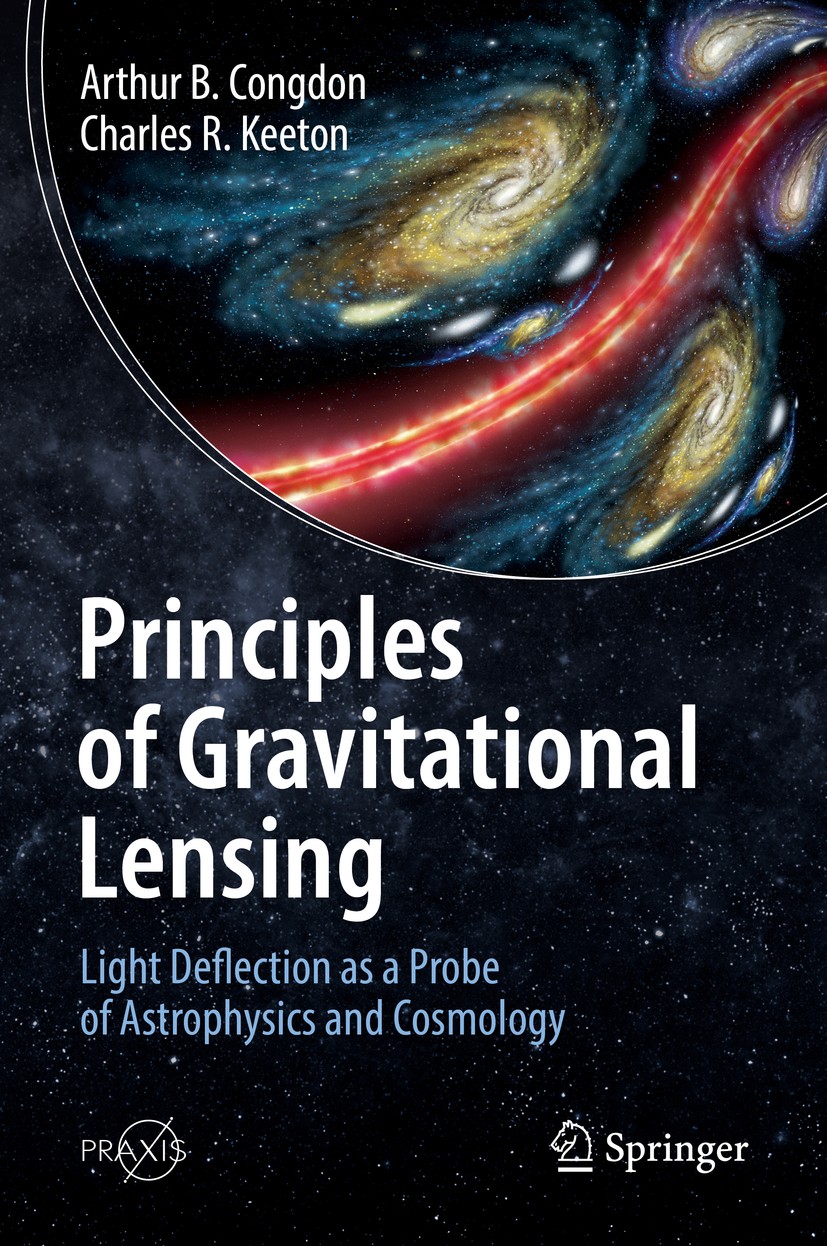| 书目名称 | Principles of Gravitational Lensing |
| 副标题 | Light Deflection as |
| 编辑 | Arthur B. Congdon,Charles R. Keeton |
| 视频video | http://file.papertrans.cn/756/755617/755617.mp4 |
| 概述 | Provides an introduction to all aspects of gravitational lensing for upper undergraduates and graduates in the field.Applies Einstein‘s theory of General Relativity to current-day observations of dist |
| 丛书名称 | Springer Praxis Books |
| 图书封面 |  |
| 描述 | .This textbook provides an introduction to gravitational lensing, which has become an invaluable tool in modern astrophysics, with applications that range from finding planets orbiting distant stars to understanding how dark matter and dark energy conspired to form the cosmic structures we see today. Principles of Gravitational Lensing begins with Einstein’s prediction that gravity bends light, and shows how that fundamental idea has spawned a rich field of study over the past century..The gravitational deflection of light was first detected by Eddington during a solar eclipse in May 1919, launching Einstein and his theory of relativity into public view. Yet the possibility of using the phenomenon to unlock mysteries of the Universe seemed remote, given the technology of the day. Theoretical work was carried out sporadically over the next six decades, but only with the discovery of the system Q0957+561 in 1979 was gravitational lensing transformed from a curiosity ofgeneral relativity into a practical observational tool..This book describes how the three subfields known as strong lensing, weak lensing, and microlensing have grown independently but become increasingly intertwined. D |
| 出版日期 | Textbook 2018 |
| 关键词 | Gravitational lensing textbook; Strong lensing; Weak lensing; Microlensing; Basics of gravitational lens |
| 版次 | 1 |
| doi | https://doi.org/10.1007/978-3-030-02122-1 |
| isbn_ebook | 978-3-030-02122-1 |
| copyright | Springer Nature Switzerland AG 2018 |
 |Archiver|手机版|小黑屋|
派博传思国际
( 京公网安备110108008328)
GMT+8, 2025-12-17 12:23
|Archiver|手机版|小黑屋|
派博传思国际
( 京公网安备110108008328)
GMT+8, 2025-12-17 12:23


